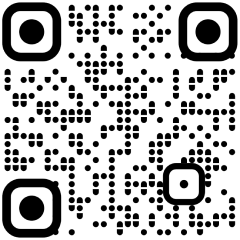TOKYO – A year into his job, Bank of Japan Governor Kazuo Ueda said he had achieved a goal he set when taking the helm: changing the bank’s complex monetary stimulus into a simpler framework.
Speaking in parliament on Monday, he also said the BOJ would continue with such efforts and set monetary policy in accordance with changes in the economy.
“When I assumed my post a year ago, I felt the BOJ’s policy framework had become a technically difficult one due to various reasons. If economic conditions allowed, I had hoped to make the framework simpler and easier to understand,” Ueda said.
“Thankfully, the economy was in fairly good shape in the previous fiscal year (that ended March 31), so I was able to fulfil my mission,” he told parliament.
Since becoming BOJ governor on April 9 last year, Ueda began dismantling his predecessor’s massive stimulus by removing a dovish forward guidance and phasing out the bank’s controversial bond yield control by end-2023.
In March, the BOJ ended eight years of negative interest rates and other remnants of its unorthodox policy, making a historic shift away from its focus on reflating growth with decades of massive monetary stimulus.
The BOJ currently sets a single short-term interest rate target at a range of 0-0.1% unlike under yield curve control, when it had targets for both short- and long-term rates.
While it continues to buy government bonds worth roughly 6 trillion yen ($39.5 billion) per month, Ueda has said the BOJ hopes to reduce purchases in future.
“I would give the governor a grade of 80 on a scale of 100,” said Mari Iwashita, a veteran BOJ watcher who is chief market economist at Daiwa Securities. “While it took a year, Ueda gathered enough data to review the BOJ’s massive stimulus and made progress towards normalising monetary policy.”
Ueda’s next challenge is to smoothly navigate further interest rate hikes without spooking market players, many of whom are accustomed to decades of near-zero borrowing costs.
Communication could be challenging. Under former Governor Haruhiko Kuroda, the BOJ’s mission was simply to maintain massive stimulus until its 2% inflation target was in sight.
Having shifted to a more “data-dependent” approach, Ueda’s comments will come under scrutiny for any subtle change in tone on his assessment of the economy and prices, analysts say.
“As Governor Ueda has been saying, the BOJ’s monetary policy is finally ‘back to normal’,” in which rate hike decisions will be made incrementally and upon careful scrutiny of the economy, said a source familiar with its thinking said.
The governor seems to have his eyes set on the next mission. Ueda said last week that inflation will likely accelerate from “summer towards autumn” as bumper wage hikes push up prices, signalling the chance of another rate hike this year.
Another key challenge for the BOJ would be to reduce its massive balance sheet which, at roughly 733 trillion yen, well exceeds the size of Japan’s economy.
Tapering too hastily could cause an abrupt spike in bond yields that boosts the cost of financing Japan’s huge debt.
“By maintaining the pace of bond buying, the BOJ was able to avert a spike in long-term yields. But by stressing its resolve to maintain accommodative monetary conditions, the bank helped accelerate the yen’s declines,” Daiwa’s Iwashita said. “The BOJ is falling into a dilemma”, she said.
Expectations that Japanese interest rates will stay low for a prolonged period have fuelled an unwelcome slump in the yen that is hurting households and retailers by inflating the cost of imports. ($1 = 151.7800 yen)











